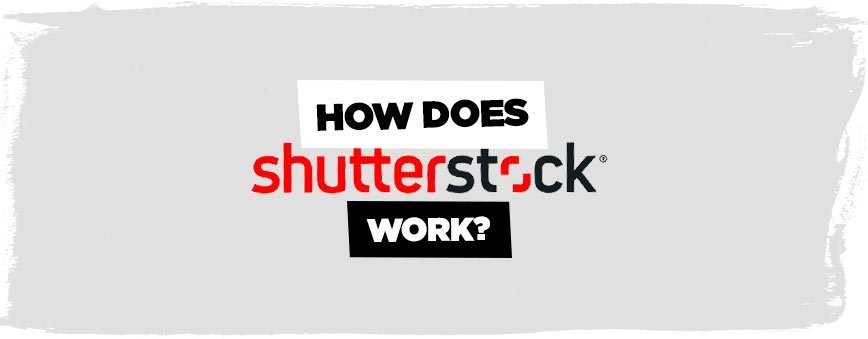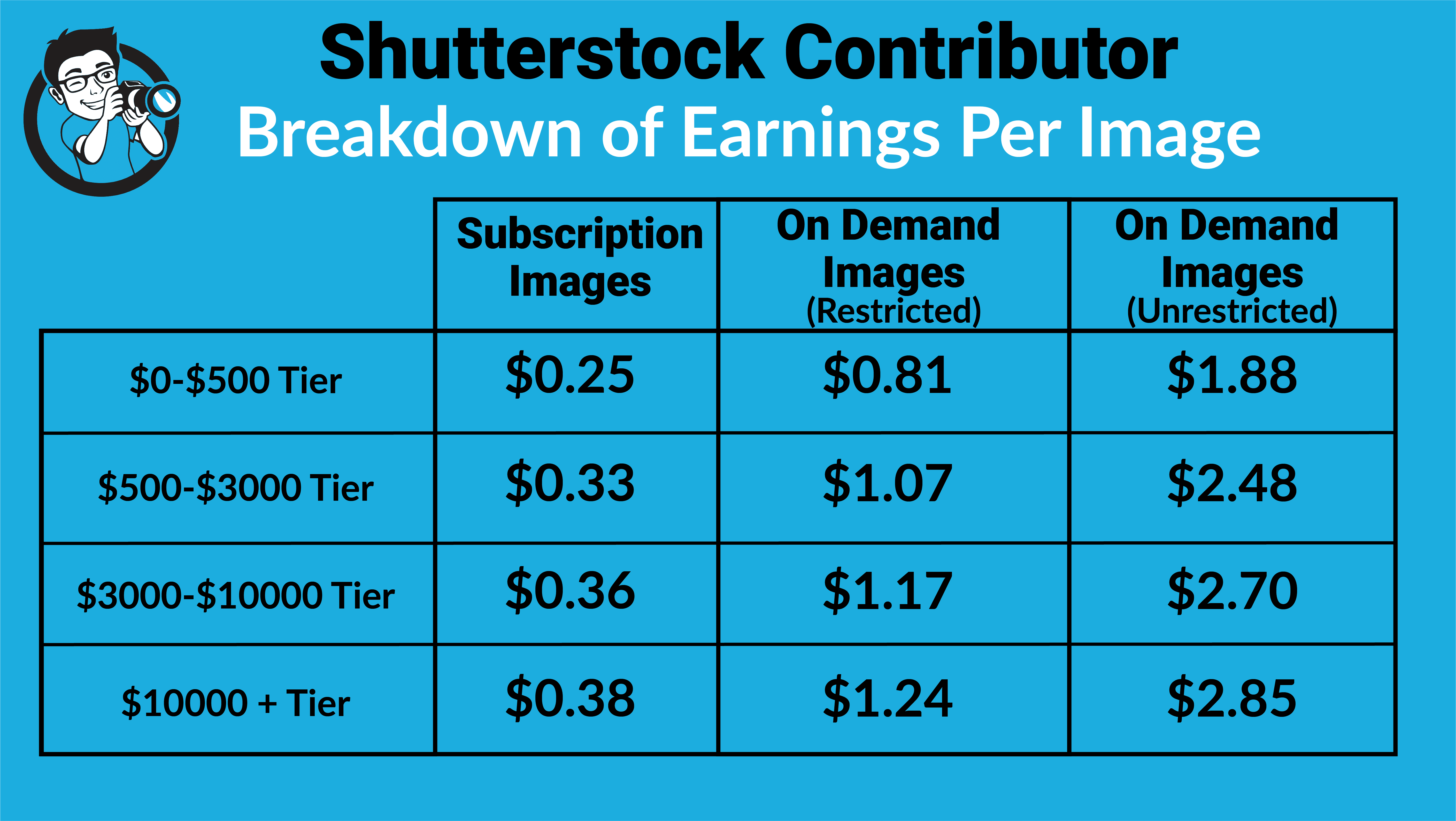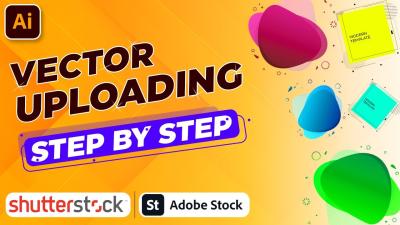Have you ever wondered how websites, blogs, or marketing teams find those perfect images, videos, or music tracks? Shutterstock is one of the biggest platforms out there, offering a vast library of high-quality content for all kinds of creative needs. Whether you’re a designer looking for stunning visuals or a business needing stock footage, Shutterstock makes it easy to find and license content quickly. For contributors, it’s a place to share their work and earn money. In this post, we’ll explore how
How Buyers Can Access and Purchase Content on Shutterstock

Getting started as a buyer on Shutterstock is simple and straightforward. The platform is designed to be user-friendly, whether you’re looking for a single image or a bulk package of videos. Here’s a step-by-step guide to help you access and purchase content:
1. Creating an Account
First, you’ll need to sign up for a free account. You can do this by visiting Shutterstock’s website and clicking on the “Join” button. You’ll be asked to provide basic information like your email address and create a password. Once you verify your email, you’re ready to start browsing.
2. Browsing the Content
Shutterstock has an intuitive search bar at the top of the page. You can enter keywords related to what you’re looking for—like “sunset,” “business meeting,” or “nature.” Use filters to narrow down results by orientation, color, image type (photo, vector, illustration), or media type (photo, video, music).
For example, if you’re designing a website about travel, you might search “beach sunset” and filter for high-resolution photos.
3. Preview and Select
Once you find an image or video that catches your eye, you can preview it in full size. Shutterstock allows you to add items to your lightbox (a kind of shopping cart) to compare and decide later.
Most content is available for immediate preview, giving you a good idea of what you’re purchasing.
4. Choosing a License
Shutterstock offers different licensing options depending on your needs:
- Standard License: Suitable for most projects like websites, presentations, and social media. It generally allows up to 500,000 copies or views.
- Enhanced License: For larger-scale uses, such as merchandise, print runs over 500,000, or products for resale.
Make sure to select the license that fits your project’s scope.
5. Purchasing Content
Once you’ve chosen your content and license, click “Add to Cart.” You can then proceed to checkout. Shutterstock offers several payment options, including credit cards, PayPal, and subscription plans.
If you’re a frequent buyer, consider subscribing to a plan that provides a set number of downloads per month at a discounted rate. Subscriptions are flexible, with options like 10, 20, or more downloads monthly.
6. Download and Use
After completing your purchase, you can download the files in your preferred resolution. Remember to keep your license details handy, as you’ll need to adhere to the licensing terms when using the content.
That’s pretty much it! Using Shutterstock as a buyer is designed to be quick and easy, helping you find the right content without hassle. Whether you’re creating a social media post, a presentation, or a marketing campaign, Shutterstock makes the process seamless so you can focus on your creative work.
How Contributors Can Submit and Earn on Shutterstock

If you’re passionate about photography, illustration, or design, becoming a contributor on Shutterstock can be a fantastic way to turn your creativity into income. The process is straightforward, and once you’re set up, it’s all about uploading your best work and letting the platform do the rest.
First things first, you need to sign up as a contributor. Visit Shutterstock’s contributor portal and create an account. During registration, you’ll be asked to provide some personal details and agree to their terms. Once approved, you can start submitting your content.
Uploading your work is simple. You can upload multiple files at once through their user-friendly interface or use their bulk upload tool if you have a large batch. Make sure your files meet Shutterstock’s quality and technical standards — high resolution, proper licensing, and clear, well-lit images tend to perform the best.
When submitting, you’ll be prompted to add relevant keywords, titles, and descriptions. Think of this as helping buyers find your work easily. Use descriptive, accurate keywords and avoid spammy tags, because better metadata leads to more visibility and sales.
Once your images are live, they’re available for buyers worldwide. You earn royalties each time someone downloads your content. The amount you earn depends on several factors, including your exclusive status (whether you’re exclusive to Shutterstock or not), your contributor level, and the type of license purchased.
Shutterstock offers various tools to track your earnings, see which images perform best, and optimize your portfolio. Building a diverse collection of high-quality images increases your chances of consistent sales. Remember, the more relevant and appealing your work, the more opportunities you have to earn.
And here’s a pro tip: stay active! Regularly upload fresh content, update your portfolio based on trending themes, and engage with the community or forums if available. Over time, as your portfolio grows and you gain experience, you can see your earnings scale up. Many contributors find that persistence and quality are the keys to making Shutterstock a steady income source.
Pricing Models and Licensing Options Available on Shutterstock
Understanding the different pricing models and licensing options on Shutterstock is essential whether you’re buying or selling content. It can seem complex at first, but once you get the hang of it, it helps you make informed decisions and maximize your usage or earnings.
Shutterstock primarily offers two types of licenses: Standard and Enhanced. Here’s a quick breakdown:
| License Type | Usage Rights | Cost |
|---|---|---|
| Standard License | Allows use for most projects like websites, advertising, social media, and print up to 10,000 copies. Not for merchandise or products for resale. | Lower cost, suitable for typical commercial use. |
| Enhanced License | Provides broader rights, including unlimited print runs, merchandise, and products for resale. Perfect for high-profile campaigns or products. | Higher price, reflecting expanded rights. |
Pricing for images and videos depends on the resolution, size, and license type. Buyers purchase credits or subscribe through various plans, which influence how much they pay per download. For contributors, this means your earnings per download can vary based on how the buyer chooses to license the content.
Shutterstock also offers subscriptions and on-demand packs for buyers:
- Subscriptions: Buyers pay a set fee monthly or yearly for a specific number of downloads. This is cost-effective for frequent users.
- On-demand Packs: Buyers purchase a bundle of credits they can spend over time, offering flexibility and often a better rate per download.
For contributors, understanding these models helps you predict your potential earnings. Typically, subscriptions and packs generate more downloads, but the payout per download might be lower than single, high-priced licenses. Therefore, a diverse portfolio of content that appeals across licensing types can help maximize your overall earnings.
In summary, Shutterstock’s licensing options are designed to suit a wide range of uses, from casual social media posts to commercial products. As a contributor, it’s good to be aware of these options so you can tailor your uploads accordingly and optimize your income potential. Whether you’re looking to license your work for small projects or commercial campaigns, Shutterstock has the tools and licenses to support your goals.
Tips for Buyers to Find High-Quality Images and Videos
Looking for the perfect image or video can sometimes feel overwhelming, especially with the vast library Shutterstock offers. But don’t worry! There are some handy tips to help you quickly find high-quality content that matches your needs.
First, use specific keywords. Instead of searching with vague terms like “nature,” try to be more descriptive, such as “sunset over mountains” or “business team meeting.” The more precise your keywords, the better your chances of finding exactly what you want.
Leverage filters and advanced search options. Shutterstock provides filters like orientation (horizontal or vertical), color schemes, image type (photo, illustration, vector), and even the number of people in an image. Use these to narrow down your results and save time.
Check the image resolution and quality. Before downloading, always look at the image size and resolution details. High-resolution images are essential if you plan to print or use the content in large formats. Shutterstock usually tags images with quality indicators, so pick those marked as “editorial quality” or “premium” for the best standards.
Review the preview and zoom in. Use the zoom feature to examine details closely. This helps ensure the image’s sharpness and clarity meet your standards, especially for close-up shots or detailed videos.
Read the licensing details carefully. Different images and videos come with varying licenses. Make sure the license aligns with your project needs—whether it’s for commercial use, social media, or editorial purposes. This way, you avoid any legal hiccups later.
Favor images with diverse and authentic subjects. Authenticity resonates more with viewers. Look for images that feature real people in natural settings, and avoid overly staged or clichéd visuals. Shutterstock often highlights trending and popular images, so browsing those can also spark inspiration.
By following these tips, you’ll be better equipped to find high-quality, impactful visuals that elevate your project. Remember, a little extra time spent in the search process can make a big difference in the final outcome!
Best Practices for Contributors to Maximize Earnings
Are you a photographer, videographer, or digital artist looking to earn more through Shutterstock? Great! Here are some tried-and-true practices to help maximize your earning potential as a contributor.
First, focus on quality over quantity. Upload high-resolution, well-composed images and videos. Sharp, clear visuals with good lighting tend to perform better and attract more downloads. Remember, buyers are often looking for professional-grade content.
Stay on top of current trends and niches. Keep an eye on what’s popular—like sustainability, remote work, or health and wellness—and consider creating content that aligns with these themes. Shutterstock often highlights trending topics, so tapping into these can give your portfolio a boost.
Use relevant and detailed keywords. When uploading your content, add descriptive titles, tags, and keywords. Think about what buyers might search for—be specific and include variations. The more accurate your keywords, the easier it is for your content to be discovered.
Provide a diverse portfolio. Don’t put all your eggs in one basket. Upload a variety of images and videos across different subjects, styles, and formats. This broadens your appeal and increases chances of sales across different buyer needs.
Engage with the community and stay informed. Participate in Shutterstock contributor forums and read their blogs for updates, tips, and guidelines. Staying informed helps you adapt to platform changes and discover new opportunities.
Optimize your portfolio for visibility. Regularly update your portfolio with fresh content, and consider seasonal or event-related themes. Use consistent branding and style to build a recognizable portfolio that buyers trust.
| Best Practice | Benefit |
|---|---|
| High-quality uploads | Attracts more downloads and higher licensing fees |
| Trending themes | Increases visibility during peak demand |
| Relevant keywords | Improves discoverability in search results |
| Diverse content | Expands your potential buyer base |
| Consistent updates | Keeps your portfolio fresh and engaging |
Remember, success on Shutterstock doesn’t happen overnight. By consistently producing top-quality content, staying current with market trends, and optimizing your uploads, you can significantly boost your earnings over time. Keep learning, experimenting, and refining your approach, and you’ll find yourself thriving as a contributor!
Conclusion and Final Thoughts on Using Shutterstock Effectively
Understanding how Shutterstock functions is essential for both buyers and contributors aiming to maximize their experience on the platform. For buyers, mastering the search tools, licensing options, and subscription plans can lead to more efficient and cost-effective image sourcing. Contributors, on the other hand, should focus on creating high-quality, original content that aligns with market demand and adheres to Shutterstock’s submission guidelines to increase their visibility and earnings.
To use Shutterstock effectively, consider the following tips:
- For Buyers:
- Utilize advanced search filters to find the most relevant images quickly.
- Understand licensing options to ensure legal compliance for your projects.
- Subscribe to plans that match your usage needs to save costs.
- For Contributors:
- Consistently upload fresh, high-quality content to increase your portfolio’s visibility.
- Research trending topics and keywords to improve discoverability.
- Engage with the community and review feedback to refine your submissions.
Ultimately, success on Shutterstock depends on a clear understanding of platform mechanics and strategic engagement. By leveraging the available tools and staying informed about industry trends, both buyers and contributors can optimize their experience and achieve their goals more effectively. Remember, consistent effort and attention to quality are key to thriving on Shutterstock’s dynamic marketplace.

